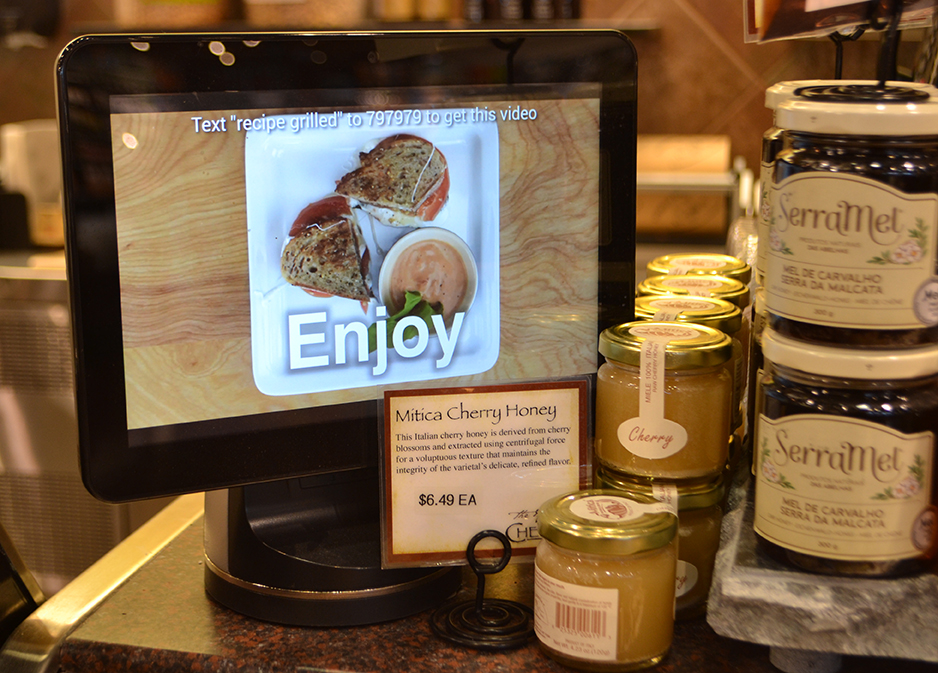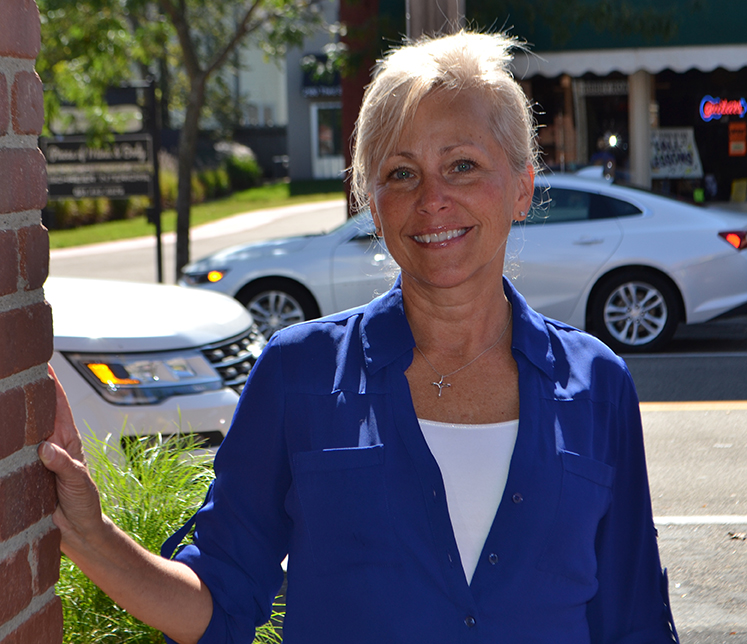Smart tablets are hitting their stride: replacing laptops for the younger generations, being reconfigured into kitchen appliances (part exhaust hood, part family communication vehicle), advertising the freshness of fast food at fast-casual counters and soon they’ll be supplying recipes and shopping lists at produce, meat and cheese counters
Entrepreneur Laurie McLevish saw the benefit of using technology in grocery stores to empower shoppers to try something new. Shoppers tend to get into a buying rut, she said, but seeing foods outside their comfort zone being prepared may spur them to try something new—which enables grocery stores to move speciality items, as well as perishable goods faster.
Both she and her business partner have days jobs—McLevish in sales and her partner in technology—but when they were brainstorming ideas for going into business together, they hit upon developing technology for grocery stores. McLevish, a self-proclaimed foodie, focused in on the end caps where they have “all that stuff,” she said, that is intriguing, but confusing. The partners thought, “wouldn’t it be fun to have technology with instructions on how to use the products.” Their “fun” turned into a side business, which they’re working at to become their full-time business (McLevish’s partner wishes to remain anonymous until that happens, she said). Grocery stores were a perfect target, she added, because they are notoriously low tech.
The end result is Cracked Pot, a Minnesota-based start-up that is gearing up to supply programmed smart tablets to grocery stores as a sales tool. Tests show it solves a problem for both consumers and storeowners. Grocery stores are fighting to keep their share of food dollars as delivery services are making it easier for people to shop online or skip buying groceries all together. Another stat in Cracked Pot’s favor is that only 10 percent of Americans say they love to cook, according to USA Today, but another survey by Peapod and ORC International, found that 72 percent of American cook at home four nights a week, which means they just may be in the mood for some cooking help from the meat counter.
U.S. consumers spend an average of 41 minutes on a grocery-shopping trip, according to the Time Use Institute, and 40 percent need to go to more than one store to complete their shopping list. At a time when consumers are spending just 5.6 percent of their total disposable income for groceries (compared to 4.3 percent on dining out, according to creditdonkey.com), grocery stores need to offer ways to make the experience less time consuming. And also to appeal to younger buyers who aren’t as experienced in the kitchens as their grandmothers were.
After researching the options, they came up with the idea to produce one-minute instructional videos with a code that when typed into a smart form sent a short shopping list and recipe to the customers’ smart phones. They put together a team, including “nationally trained chefs to do the videos,” and started testing the concept at the upscale Kowalski grocery store in Woodbury, Minnesota, in March of 2017. “We’d highlight whatever they wanted to move,” she said. And that was the beauty of the technology. Say, the store’s shipment of red snapper isn’t moving fast enough, the smart tablets demo can be loaded with a recipe and shopping list to motivate shoppers to skip the halibut and go for the snapper. It’s also a way to sell produce out of season, and is especially helpful for perishable items that may need a push out the door.

We checked in with the Kowalski employees at the serving counters, who said the videos were a hit with shoppers and they were selling more of the items being featured than they normally would.
As they broaden their testing and continue tweaking the business plan, McLevish said they’ve contracted with a developer overseas to start work on their store- and consumer app so it can be rolled out.
A side benefit for the stores is that the videos sell additional items needed in the recipe. Stores can provide Cracked Pot with their grocery calendars so the videos can be produced ahead of time. Plus the store can load its own videos on the tablets.
Currently, the plan is to sell subscriptions to the service with or without the hardware, McLevish said.
And if you’re wondering why the company’s called Cracked Pot, McLevish explained that the original choice was What’s For Dinner, but a trademark search quickly squelched any plans to use that name. The cracked pot has both a Biblical theme about making things whole, and also a cooking reference. And the bright red pot is a logo that’s hard to miss.



